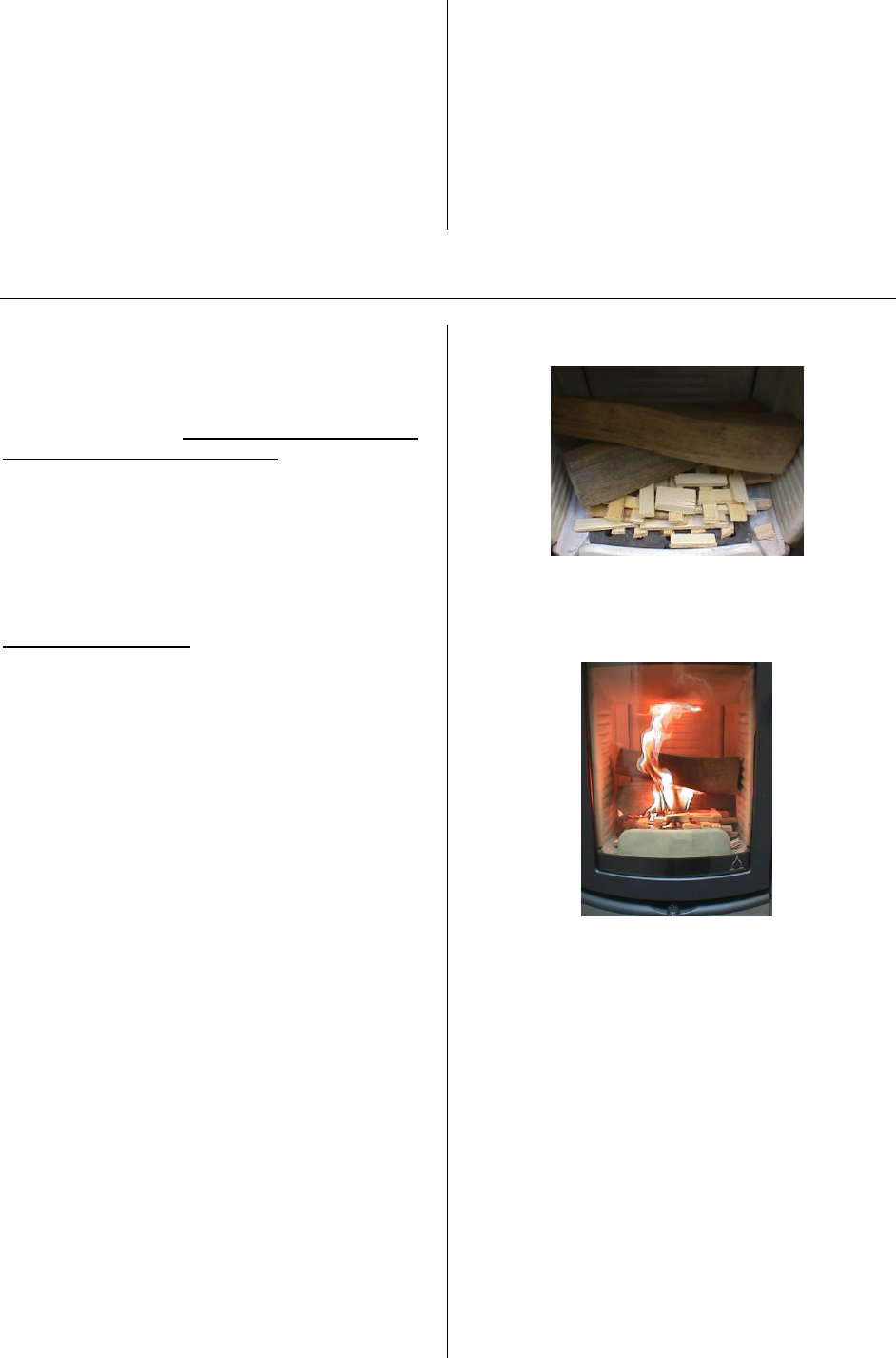
english 5 G3
Floor load capacity
Make sure that the load capacity of the supporting
construction is sufficient to carry the weight of the
entire unit
, before the heating unit is installed.
Combustion air
Being the user of the stove you must take care of a
sufficient combustion air supply. Sealed-up windows
and doors may not allow a sufficient combustion air
supply or disturb the draught behaviour of your stove.
Stove pipe connection
For your own safety stringent laws apply for
connecting the stove pipes to the chimney. Your
professional dealer or distributor knows these laws.
Please have your certified retailer carry out the
connection of your stove.
3. CORRECT OPERATION OF YOUR STOVE
Initial startup of your stove
Your stove was treated with a special environmentally
friendly lacquer. The lacquer surface is still soft when
the stove is delivered. The lacquer will harden when
your stove is used for the first time. The lacquer
surface must not be touched when it is heated for the
first time. The stove must be initially heated at a high
temperature for at least 1.5 hours. Visible vapors may
appear during the hardening of the lacquer. Therefore
it will be necessary to open the windows during the
initial operation in order let the vapors escape into the
outdoors.
PLEASE TAKE NOTE:
It takes several heating
sessions before for your stove releases only the
pleasant smell of burning wood.
Approved fuels
Dry, well cured and natural wood (hardwood
preferred), wood briquettes.
Maximum amount of fuel
Maximum amount of fuel to be added: 1,6 kg wood
or appr. 1,8 kg wood briquettes
. Larger amounts of
fuel can lead to overheating and thus damage the
stove.
Clean burning
The wood must be dry (relative wood moisture
< 15%) and untreated. The right amount of wood
must be burned in order to ensure a clean fire that
releases only small amounts of emissions.
Making a fire
Prepare everything you need for starting the firesoft
wood chips, igniter materials (such as Austroflamm
lighter), wood. Figure 1 provides a good overview of
the quantity of the materials you will need.
Open the primary and secondary air all the way.
Move both sliders. See figure 2.
Open the stove door.
Put ignition aid on the floor of the firebox.
Lay soft wood chips onto the paper.
Lay one or two logs of wood on the wood chips.
Figure 3: Igniting the Fire
Light the ignition aid. Close the firebox door. As soon
as the chips burn well, close the primary air supply
.
See Figure 2.
Figure 4: Close the Primary Air
As soon as the wood logs are burning well too, you
can regulate the heating capacity with the
secondary air slider. (slider set to the maximum
(“AUF”) setting produces maximum heat – see
figure 2.)
When adding wood to the fire, follow the same
procedure as when igniting the fire: Open primary
air, open secondary air, carefully open firebox
door, lay wood on the fire, close the firebox door.
Wait until the added wood catches fire and is
burning. Then close the primary air. Subsequently
regulate the fire with the secondary air supply.
symbol figures


















